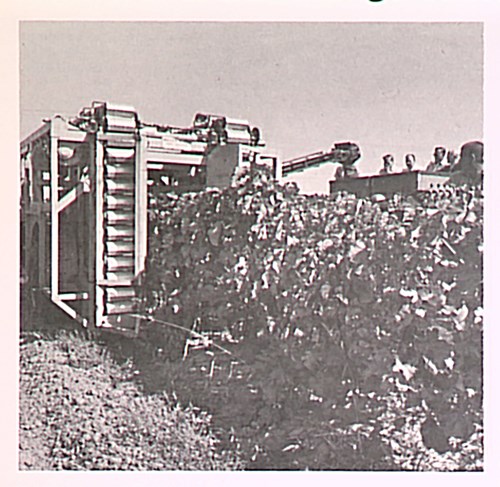Canada’s peculiar network of ten parochial market groups, each with its own regulations for wines, encouraged other Provinces to license wineries that were no more than bottling plants for imported products. By 1964 both Alberta and Saskatchewan had gone this route, and the possibility of sea-to-sea access for Ontario’s wines crumbled.
George Stewart had been a director since 1949 and Chairman for seven years when he decided to step aside, and the Sixties opened with Sim House chairing the meetings.
Sim reported a record harvest, at 55,000 tons, which he diplomatically described as “being of variable quality.” He was already an experienced negotiator and in 1960, together with Vic Scull and Ron Moyer representing the growers, the price for wine grapes reached $95 a ton - finally climbing back to the level of 1947.
Farm gate income from sales to wineries was a record too, at $3.56 million shared among 1,044 growers. Exports consumed an additional 8,000 tons, at $82 a ton.
When speculators moved in, buying at very low prices from growers who did not have contracts and then selling to processors at full price, the Board took court action.
The ‘Specials’
French hybrids were becoming a force. In 1961 they made up 6.6% of winery buying yet just Delaware and President earned the $50/ton premium. The negotiators pushed for change. The following year, with Keith Wiley replacing Vic on the bargaining team, Dutchess, Foch, Seibel 9110, Chelois, Seibel 6468, Muscat, and J. Riesling were added to the premium list.
When news that Brights Wines had planted 100 acres of Elvira reached Keith Wiley, he filed a complaint with the Board, saying a “gentlemen’s agreement had been struck that only experimental varieties would be planted by Brights.” It got nowhere. The following year the company added Agawams. Keith recalls “ … lot’s of horse trading in negotiations. One year we were so frustrated we went to mediation over $2 a ton. The arbitrator said look, why don’t the wineries up their price by a dollar and the growers drop theirs’s by a dollar, so I can go home for dinner?” And so, the base price moved to a record $102/ton.





